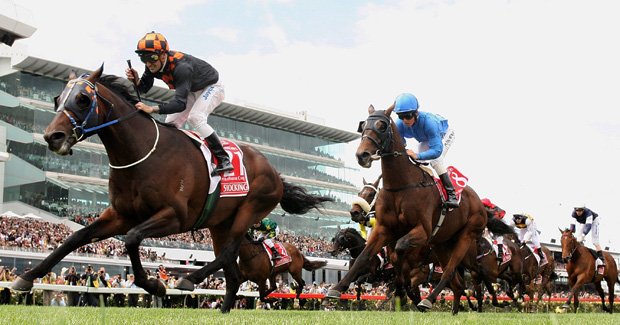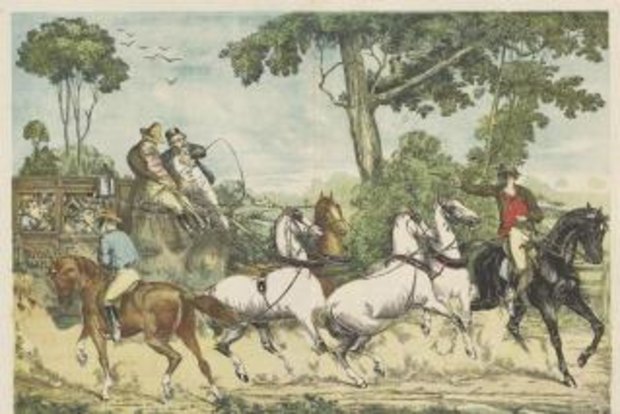History Of Horse Racing In Australia
Today's Australian horse racing scratchings, betting & results including the Melbourne Cup. 100% free horse racing tips. The dark side of the horse racing industry has been exposed on ABC's 7.30 program. It was the culmination of a gruelling two-year-long investigation — that gathered damning evidence of the mass slaughter of racehorses who are deemed no longer 'useful'. Melbourne Cup, “The race that stops a nation” is Australia’s most famous thoroughbred horse race. Conducted as a part of Melbourne’s spring racing carnival, this 3200-metre race is the richest two-mile handicap in the world. Began in 1861, the story of Melbourne Cup is also the story of horse racing in Victoria. Horse Racing in Australia: History, Regulation & Betting Posted on March 3, 2020 February 24, 2021 by wagbetagent Coming close to some of the country’s top-ranking professional sports is Australia’s growing thoroughbred horse racing. Thoroughbred horse racing is an important spectator sport in Australia, and gambling on horse races is a very popular pastime with A$14.3 billion wagered in 2009/10 with bookmakers and the Totalisator Agency Board (TAB).
- History Of Horse Racing In Australia Fires
- History Of Horse Racing In Australia Wikipedia
- History Of Horse Racing In Australia 2020
- History Of Horse Racing In Australia Today
- History Of Australian Horse Racing
Australiais known for its exceptional lineage of thoroughbreds and with good reason.There’s a rich history behind the sport of horse racing in the country thatdates as far back as the formation of Australia as fledgling colony.
History Of Horse Racing In Australia Fires
If you’reinterested in learning about the roots of Australian horse racing, then readon.

The Introduction of Thoroughbred Horses toAustralia
Once the firstsettlement in Australia was established in 1788, the colonists introduced asmall population of horses that consisted of one stallion, a colt, and fivemares. The breeding of these animals was slow, with only two hundred horsesaccounted for by the turn of the century.
By 1810,there was a boom in their population, totalling over a thousand horses by thistime. Prior to this, the Australian government began importing thoroughbredsfrom Cape Town and India, introducing stronger horse breeds into their currentstock. Two of the most notable imported breeds that began the trend were theRockingham and Northumberland thoroughbreds.
This was anauspicious start to Australia’s horse racing tradition as the bloodhorsepopulation began to swell in the following decades. Strong lineages like Mantoand Malua have been produced since the 1800s and still continue to producechampions to this day.
Australianthoroughbreds have become a very successful export due to the superior breedsthat have been produced here. Australia has also gained some fame with the importationof shuttle stallions to be used as studs during the northern hemisphere’swinter season.

The Advent of Horse Racing and Its EarlyProminent Clubs
Theintroduction of the initial thoroughbred racehorses gave rise to horseracingevents in the country. In 1810, the first official horse race was held on the15th of October and was presided over by the new governor of the colony,Lachlan Macquarie. The race took place during a three day carnival and thedesignated race track used was located at Hyde Park, Sydney. Races were heldannually for the next three years until the regiment in charge of the eventleft in 1813.
Horse raceswere held on and off in the next few decades, with the succeeding governorsshowing their support in varying degrees to the growing interest that peoplewere having on horse racing. Several racing clubs also began emerge, such asthe Sydney Turf Club, the Australian Racing and Jockey Club, the VictorianRacing Club, and many others.
History Of Horse Racing In Australia Wikipedia
In 1840,the Australian Race Committee was formed as an officiating body that wouldregulate and organize horse racing as a whole. Two years later, the AustralianRace Committee would be reformed under its new name: the Australian JockeyClub. It was recognized as the premiere racing club at the time and has left alasting legacy by founding the Australian Stud Book, which is still used tothis day.
History Of Horse Racing In Australia 2020

In morerecent times, a merger between the Sydney Turf Club and the Australian JockeyClub was initiated in 2011 to save the then flagging New South Wales racingindustry. The new body was formed as the Australian Turf Club and operates fromits headquarters in Sydney.
History Of Horse Racing In Australia Today
Recognizing the Appeal of Horse Racing
The sportof horse racing has grown considerably since its humble beginnings whenAustralia began as a fledgling colony. As a sport, it is deeply ingrained inthe culture of the people where everyone can get together and share in racing tipsAustralia has grown to love. As the country continues to breed moreexceptional bloodhorses, there’s no doubt that horse racing will continue to bea thriving industry that its people enjoys.
History Of Australian Horse Racing
Related Posts

HORSE RACING PERSONALITIES
GEORGE ADAMS George Adams was born in England on March 14, 1839 as the fourth son of William and Martha Adams. The family arrived in Sydney on May 28, 1855. George had turned 16 on the voyage and was a big, strong, young man with fiery red hair and beard and up-standing posture. He tried his luck at various professions, as coach driver, stock dealer, saddler, baker and he even worked in the gold fields. ROBERT COOPER BAGOT Robert Cooper Bagot was born in 1828 in Ireland. In the 1840's he migrated to Australia and established a career in Melbourne as a civil engineer and surveyor. In 1861 Bagot surveyed the Melbourne Cricket Ground giving the oval today's shape and dimensions. BERT BRYANT Bert Bryant began his career as a race caller in western New South Wales on country racetracks. In 1948 he started to work at the radio station 3UZ Melbourne and remained there until he retired in 1977. WILLIAM HENRY (BILL) COLLINS Bill Collins started his career calling small country races in Victoria. In almost 50 years he called 34 Melbourne Cups becoming known as 'The Accurate One' for his ability to correctly call the result of even the closest finish. Bill Collins also called major races in England, USA, South Africa, New Zealand, Hong Kong and Singapore. On Easter Saturday in 1987 Bill Collins called his last race. SAM COX William Samuel Cox was a racing pioneer and entrepreneur. He leased a property for seven years located in a valley only six kilometers north of the town of Melbourne in 1882. It became originally known as Feehan’s Farm. After transforming the site into a large racecourse he named it Moonee Valley. SOL GREEN THEO GREEN SIR PATRICK HOGAN Patrick Hogan's Irish-born father, a dairy farmer and horse breeder, left a small thoroughbred stud to his two sons. In 1977 the brothers ended their partnership and Patrick Hogan establish a horse stud which he named Cambridge. KEN HOWARD JACK AND BOB INGHAM In 1960 Jack and Bob Ingham inherited a small chicken enterprise which they turned into a successful business empire. When their father died they also inherited the broodmare Valiant Rose. Soon the brothers proved to be equally successful as thoroughbred owners and breeders, turning their Woodlands Stud into a great nursery for thoroughbred horses. WILLIAM INGLIS AND SON William Inglis and his partner started dealing in cattle and horses in 1867. When he included his son John in the partnership in 1884 the business became known as William Inglis and Son. The company held its first yearling sale at Newmarket, NSW in 1906 where they had leased a site. In 1917 the property was purchased and continually developed and upgraded into a world class sales venue. Five generations and more than 130 years experience have made William Inglis and Son one of the leaders of the Australian bloodstock industry catering to every level in Australasia. SIR ADRIAN KNOX P.C.K.C.M.G From 1906 to 1919 Sir Adrian Knox was the Chairman of the Australian Jockey Club and responsible for many revolutionary changes including the introduction of the totalisator at Randwick, an innovation which was soon adapted by all major race clubs across Australia. SIR CHESTER MANIFOLD From 1937 to 1972 Sir Chester Manifold was a Committee member of the Victoria Racing Club. For 11 years from 1951-1962 he served as the Chairman. Concerned about the large sums of money lost to illegal bookmakers he introduced the Totalisator Agency Board (TAB) in Victoria as a means of channeling the money back into horse racing. From 1961-1968 Chester Manifold served as the first Chairman of the TAB. BERT (HERBERT AUSTIN) WOLFE Turf journalist Bert Wolfe was born on 19 July 1897 at Maitland, New South Wales. While growing up Bert spend a lot of time at his grandfathers horse farm at Heatherbrae, north of Maitland where he was present at the foaling of Lord Nolan who won the cup in 1908. |